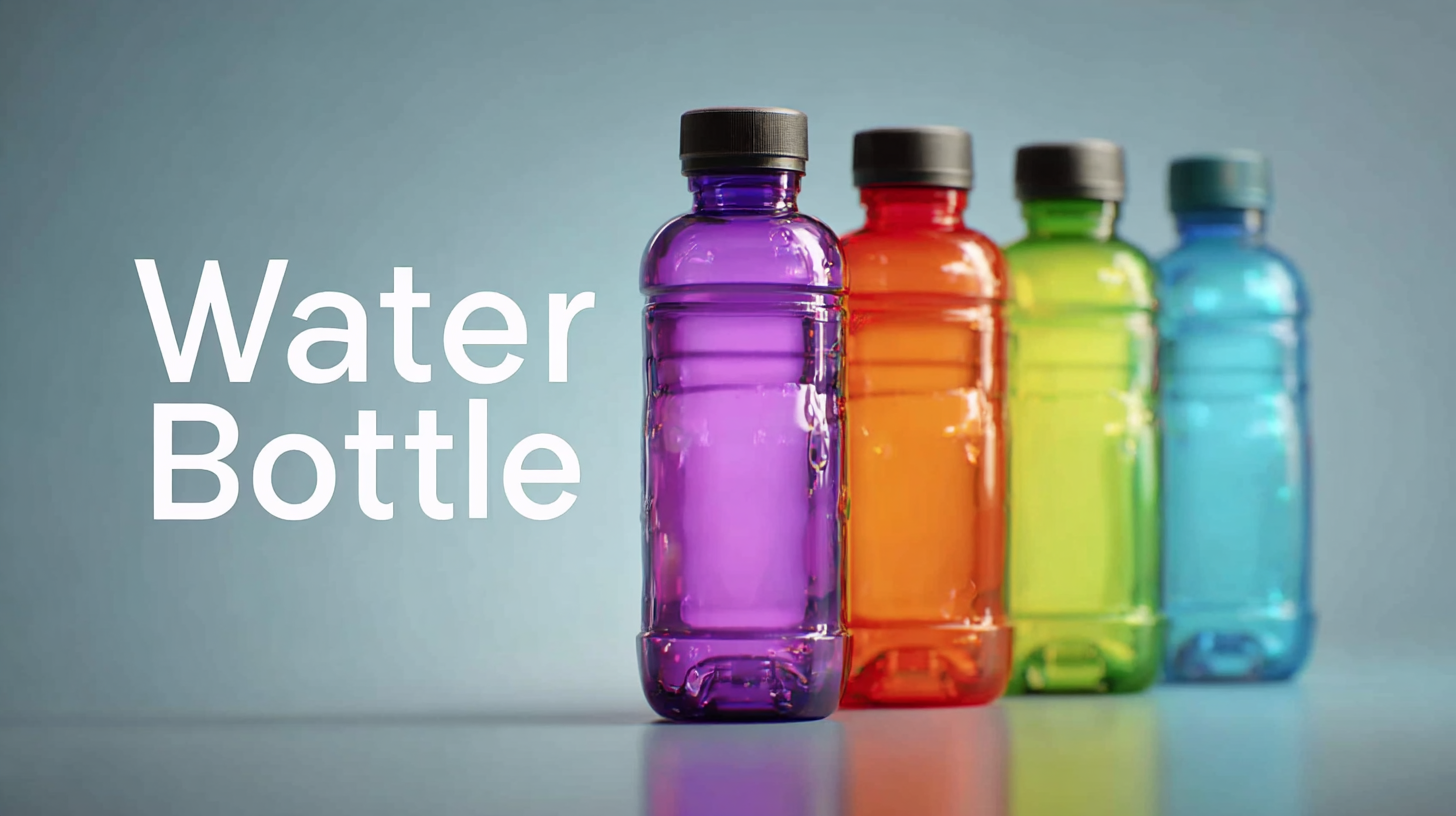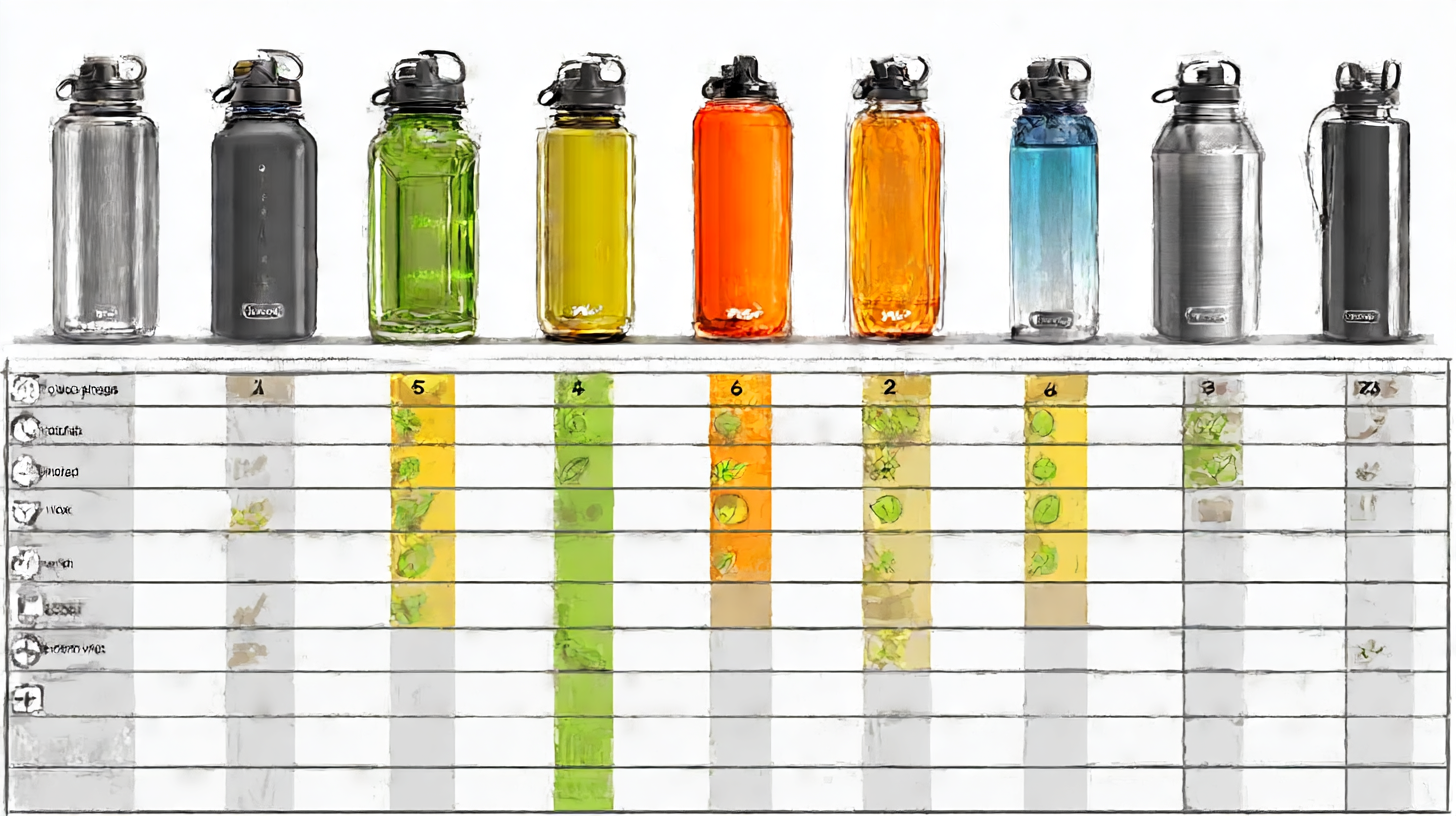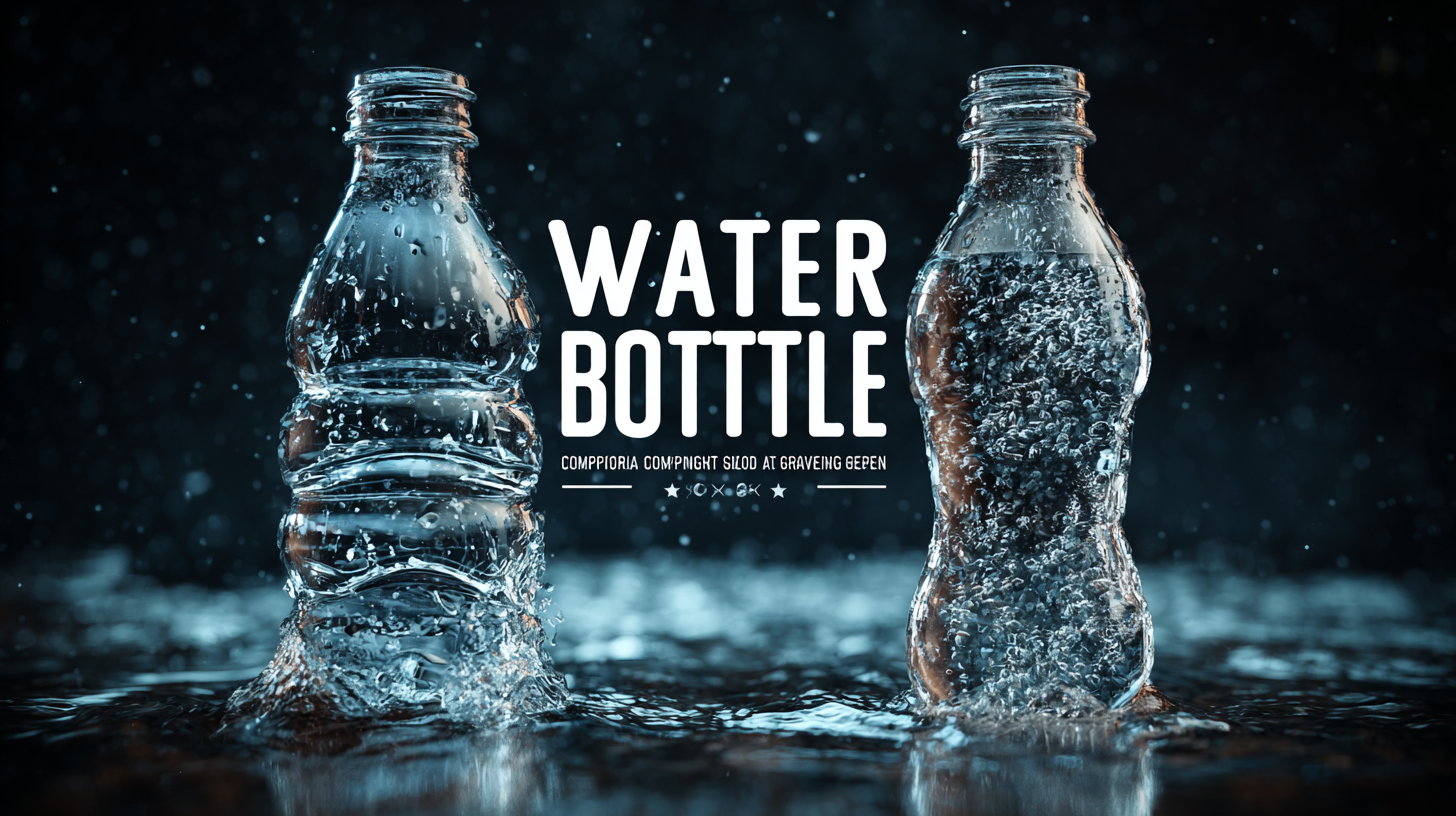
Ultimate Guide to Comparing the Best Water Bottles for Eco Friendly Global Buyers
In an age where sustainability is paramount, choosing the right water bottle can significantly impact our environment. As we look toward 2025, the market for eco-friendly water bottles is set to expand, driven by a global shift in consumer behavior and awareness of plastic pollution. This Ultimate Guide aims to equip environmentally-conscious buyers with the knowledge they need to navigate the myriad options available. From materials and durability to design and function, consumers are increasingly seeking water bottles that blend practicality with eco-friendliness. As the demand for sustainable products continues to rise, understanding the market landscape and making informed comparisons will be crucial for individuals looking to reduce their ecological footprint while staying hydrated. Join us as we explore the best water bottles on the market, helping you make a choice that benefits both your lifestyle and the planet.

Top Features to Look for in Eco-Friendly Water Bottles
When seeking the best eco-friendly water bottles, it's essential to know the top features that align with sustainable living. First and foremost, material is a crucial consideration. Opt for bottles made from stainless steel, glass, or BPA-free plastic. These materials not only minimize environmental impact but also ensure safety from harmful chemicals found in low-quality plastics. Additionally, look for bottles that promote durability and can withstand frequent use, thus reducing the need for replacements and further contributing to a circular economy for plastics.
Another significant feature is insulation capability. Insulated reusable water bottles keep beverages at the desired temperature for longer, making them ideal for both cold and hot drinks. This versatility adds to their practicality, encouraging users to choose reusable options over single-use plastic bottles. Furthermore, a secure, leak-proof design enhances user experience by ensuring convenience during travel or workouts. With the global reusable water bottle market projected to exceed USD 13 billion, it's clear that eco-conscious consumers are increasingly driven by features that foster sustainability while enhancing daily hydration practices.
Comparing Sustainable Materials: Glass vs. Stainless Steel vs. BPA-Free Plastics
When choosing the best water bottle, eco-conscious consumers often face a choice among glass, stainless steel, and BPA-free plastics. Each material has its unique advantages, making it important to consider both sustainability and functionality. Glass bottles are non-toxic and do not leach chemicals, offering the purest drinking experience. However, they can be fragile and heavier than their metal or plastic counterparts. Stainless steel, on the other hand, is durable and maintains the temperature of beverages well, making it a popular choice for active lifestyles, but the production process can result in higher carbon emissions. BPA-free plastics are lightweight and less expensive, but their environmental impact and potential health concerns are still debated.
**Tips for Choosing the Right Water Bottle:**
1. Assess your lifestyle: For those who travel frequently or engage in outdoor activities, opt for stainless steel or BPA-free plastic bottles due to their durability and lightweight nature.
2. Consider your preferences: If you prefer a clean taste without any chemical leaching, glass is the way to go, albeit with some caution about breakage.
3. Look for eco-certifications: When possible, choose bottles made from sustainable materials and those manufactured with environmentally friendly processes to contribute to a cleaner planet.

Evaluating Brands: Who Delivers the Best Quality for Eco-Conscious Consumers?
As eco-conscious consumers become more discerning, evaluating water bottle brands based on quality and sustainability is more crucial than ever. A recent report by the Global Eco Acquisitions Group reveals that over 70% of consumers prioritize environmentally friendly practices when choosing products, particularly in the beverage container market. This shift indicates that brands that align their production processes with sustainability—such as utilizing recycled materials and reducing carbon footprints—are more likely to capture the attention of eco-minded buyers.
Brands like Hydro Flask and Klean Kanteen are leading the charge by committing to sustainable practices. According to a survey by Sustainable Brands, 85% of consumers say they are willing to pay more for products from companies committed to positive social and environmental impact. These brands not only offer high-quality, durable products, but they also engage in initiatives like carbon neutrality and water use reduction. As more consumers evaluate these brands based on their environmental impact, the demand for transparent corporate practices is growing, encouraging even more brands to adopt sustainable measures.
Water Bottle Quality Comparison for Eco-Conscious Consumers
This chart compares the performance of various water bottles based on key metrics such as Material Quality, Insulation Efficiency, Design, Durability, and Eco-Friendliness. The data represents a simulated evaluation of products aimed at eco-friendly consumers.
Understanding the Environmental Impact of Water Bottles: A Global Perspective
The environmental impact of water bottles is a pressing concern for consumers worldwide. With millions of plastic bottles produced every year, the staggering amount contributes significantly to pollution and landfill waste. These bottles not only take hundreds of years to decompose but also release harmful chemicals into the soil and waterways, affecting ecosystems and public health. As global consumers become more eco-conscious, understanding these repercussions is crucial for making informed purchasing decisions.
This awareness has led to a surge in the popularity of eco-friendly alternatives, such as stainless steel, glass, and BPA-free plastic bottles. Each option offers distinct benefits in terms of sustainability and reusability. For instance, stainless steel bottles are not only durable but also keep beverages insulated for hours, reducing the need for single-use plastic. On the other hand, glass bottles are recyclable and free from chemicals, making them a safe choice. By evaluating these alternatives, consumers can significantly reduce their carbon footprint and contribute to a healthier planet.
Ultimate Guide to Comparing the Best Water Bottles for Eco Friendly Global Buyers
| Material | Capacity (liters) | Recyclable | Average Lifespan (years) | Weight (grams) | Price Range (USD) |
|---|---|---|---|---|---|
| Stainless Steel | 0.75 | Yes | 10 | 300 | 20 - 40 |
| Glass | 1.0 | Yes | 5 | 400 | 15 - 30 |
| Bamboo | 0.5 | Yes | 3 | 250 | 10 - 25 |
| Tritan Plastic | 1.2 | No | 5 | 150 | 10 - 20 |
| Aluminum | 0.6 | Yes | 7 | 200 | 15 - 35 |
How to Choose the Right Water Bottle for Your Lifestyle and Eco Goals
When choosing the right water bottle for your lifestyle and eco goals, it’s important to consider the material, functionality, and sustainability of your selection. A report by the Container Recycling Institute indicates that over 1 million plastic bottles are purchased every minute, leading to significant environmental waste. Opting for reusable bottles made from stainless steel or BPA-free plastic not only helps reduce this waste but also aligns with eco-friendly practices. Studies have shown that stainless steel bottles can reduce carbon footprints by up to 50% compared to disposable plastic bottles, making them an excellent choice for conscientious consumers.
Additionally, lifestyle considerations play a critical role in selecting the best water bottle. For active individuals, features such as insulation and portability are essential. According to the Global Market Insights report, the insulated bottle segment is expected to witness substantial growth, driven by an increasing demand for beverages that retain temperature when on the move. Finding a bottle that combines practicality with sustainable features, such as longer-lasting materials and designs aimed at reducing single-use consumption, is crucial in achieving both personal and global eco goals. By making informed choices, consumers can contribute significantly to reducing plastic waste and promoting a more sustainable future.

